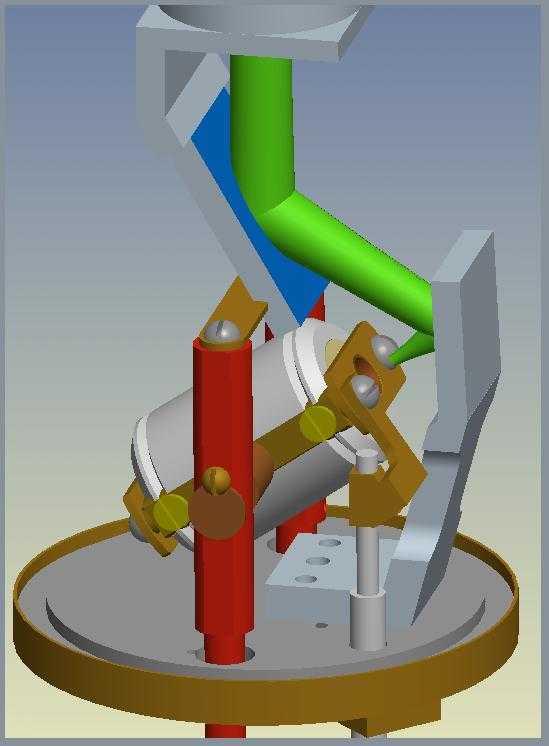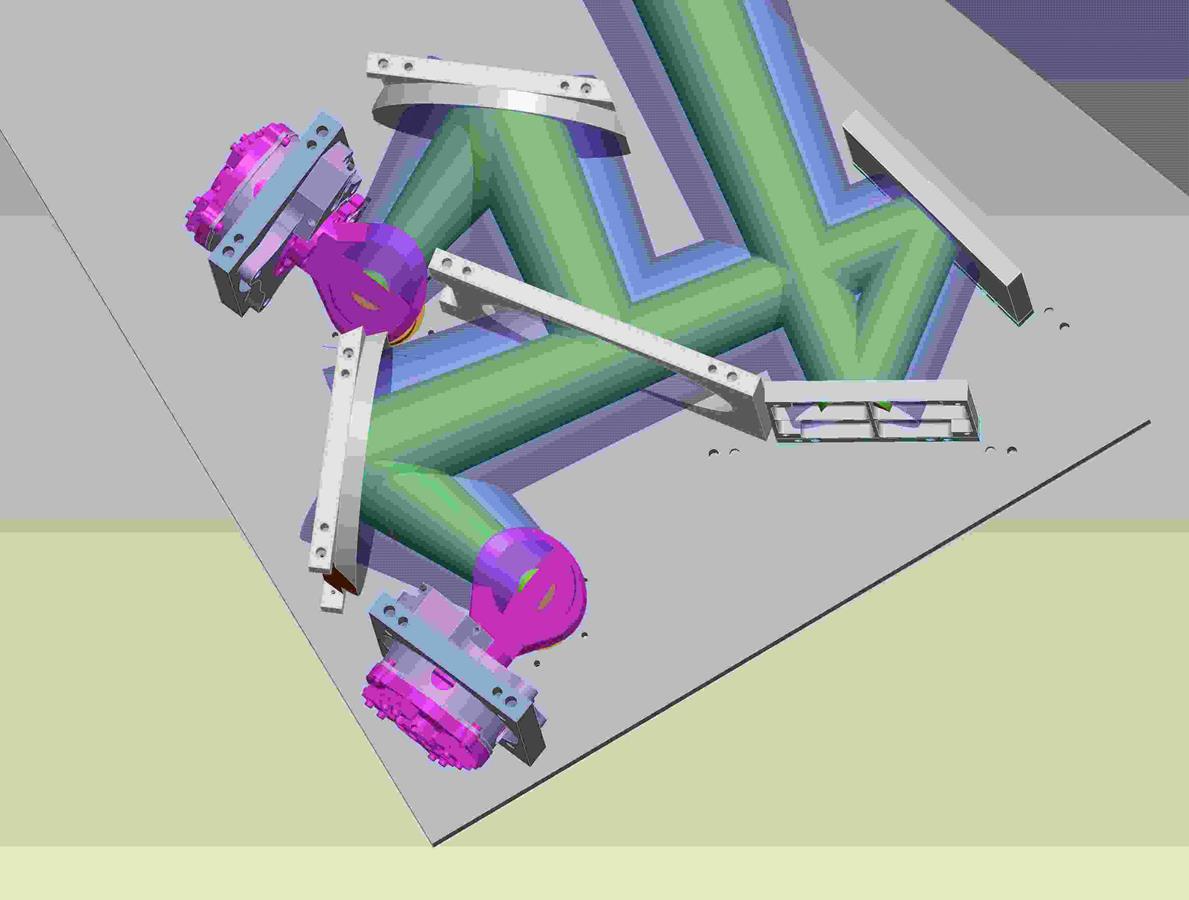The use of Computer Aided Design software has – over the last thirty years - changed the way almost all mechanical parts are designed.
Thomas Keating Ltd ported Gaussian Beam-Mode routines into a standard, but only two dimensional, mechanical CAD package in the early 1990’s and much of our work since then in making Quasi-optical systems for Plasma Fusion diagnostics, material measurements and – increasingly - Electron Spin Resonance Spectrometers was built upon that software base.
Beams (Green) in a DNP head

At the turn of the century we moved our main CAD effort to full 3-D with the use of PTC’s Pro/Engineer Wildfire suite of programs. This is a seriously large and complex piece of software (the code is some 500 MB, in contrast to 3 MB for the 2-D code) and has a fearsome reputation for difficulty in imbedding code.
Based upon an idea of Marcin Gradziel at the National University of Ireland, Maynooth, we have been able to port our 2-D routines into full 3-D operation within Pro/E Wildfire. Like their 2-D versions, the routines – small, self contained pieces of code - will propagate beams, find beamwaists, determine mirror distortion levels from Murphy’s formulae [1] and determine beam parameters. The pieces of code are chained together, such that the change of an input parameter (such as the wavelength, or size of a corrugated feed horn) will ripple through the whole, albeit virtual, Quasi-Optical circuit.
This approach offers a number of advantages in the design of Quasi-Optical systems. Because the routines are buried in a proper mechanical package, mechanical conflicts (for example, beams hitting structural parts) become readily observable.
As the routines are very simple, the time for regeneration of even very complex circuits is very short, allowing the package to be used as a design and not just a verification tool.
There is now much less risk in generating errors when forming designs with non-90 degrees bends within the optics, thereby allowing more compact designs in confined spaces and often, through the use of acute bend angles (recalling that mirror distortion goes as the Tan of half the full band angle) lower levels of distortion.
In addition, the recent development of ultra-pure Gaussian Beam-Mode generating corrugated horns has simplified, both conceptually and operationally, the design of Quasi-Optical systems, reducing the need to consider the effect of higher order modes. In addition these horns, which we are now introducing into our QO systems, reduce the opportunity for unwanted, unexpected and unpleasant resonances[i] - the bane of all Quasi-Optical system designers - to cause trouble.
EXAMPLES
We have been applying this software to the design of a range of systems, including HiPER, a 94 GHz Pulsed ESR spectrometer in St Andrews and Quasi-Optical benches for Agilent VNA’s.The images below show the beam moving though the Quasi-Optical multiplexer feed of the Cloud Pulse Radar on EarthCARE, a joint ESA / JAXA space-based mission looking at Clouds and Aerosols.

References
[1] J.A.Murphy
`Distortion of a simple Gaussian beam on reflection from off-axis Ellipsoidal Mirrors’ Int. J. Infrared and Millimeter Waves, 8 (9), pp 1165-1188, 1987
[2] P.A.S.Cruickshank, D.R.Bolton, D.A Robertson, R.J.Wylde and G.N. Smith ‘Reducing standing waves in QO systems by optimal feed horn design’. The Joint 32nd international Conference on Infrared and Millimeter Waves and 15th International Conference on Terahertz Electronics: Sept 3-7, 2007, in Cardiff, UK, Vol 2.pp 941-942.
[i] only partially ameliorated by the arrival of good free space Faraday rotation based isolators operating to 300 Ghz and above.